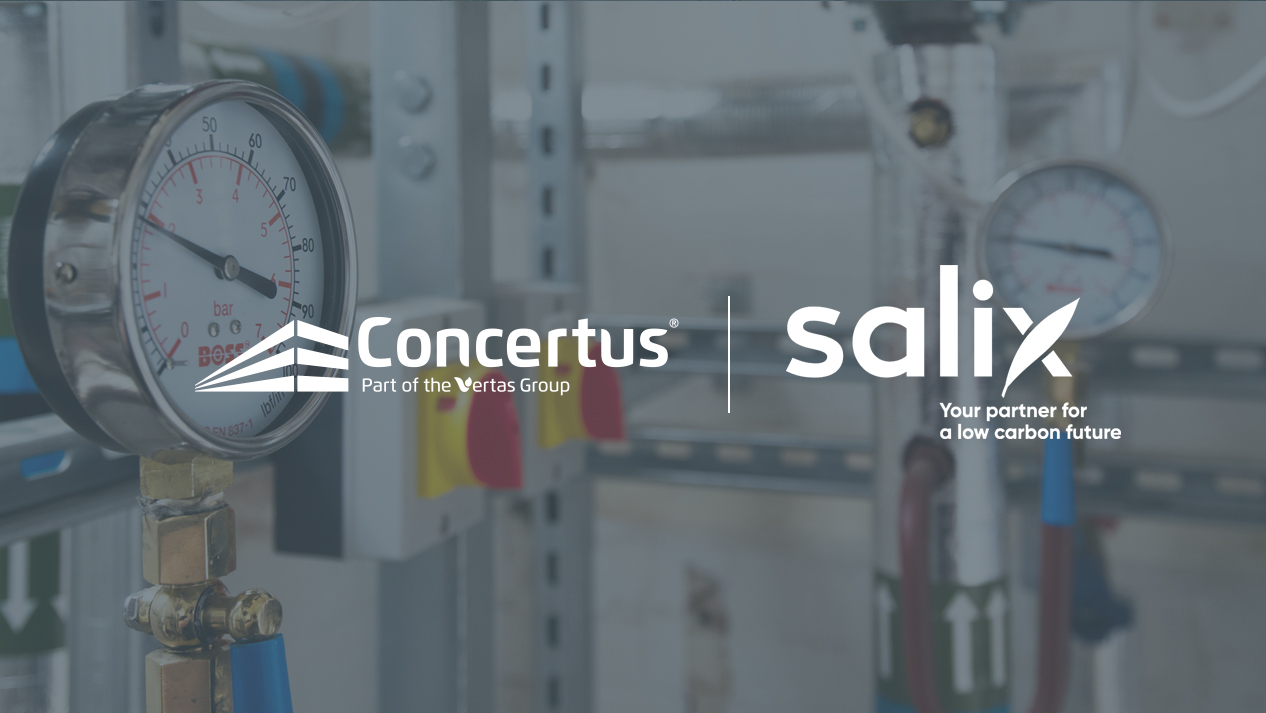February 29, 2024
Concertus’ Heat Decarbonisation Plans recognised as “exemplary” by Salix

Who are Salix?
Salix was established in 2004. Since then, up until 31 March 2022, they have assisted public sector organisations in committing to nearly 22,000 projects by administering £2.7 billion in funding. These projects have resulted in a total annual saving of 1.1 million tonnes of carbon dioxide across all of them.
Last year, we were thrilled to receive recognition from Salix for our Heat Decarbonisation Plans.
Our plans were acknowledged as “exemplary,” which is a testament to the exceptional standards and detail we invest in our projects. Commendation from the Salix Finance Low Carbon Skills Fund Team for our efforts in setting the benchmark for others in the industry highlights what we can achieve through dedication and innovation. We are committed to supporting Salix in maximising the value of public money and are dedicated to driving sustainable change.
Below, we wanted to showcase a small snippet of one of our reports.
If you need help or advice on your upcoming sustainability plans, don’t hesitate to contact us today.
Heating Plants
The existing gas-fired boilers were still operational, but servicing had revealed signs of underperformance. This necessitates the consideration of a new heating strategy, which will be a more complex swap for a like-for-like gas boiler. Transitioning to Air Source Heat Pumps (ASHP) will require careful planning to ensure maximum system efficiency, given the lead-in times for equipment. The replacement of pipework distribution and heating emitters is essential for accommodating ASHP installations, especially since the existing systems are nearing the end of their lifespan. Coordinating decarbonisation efforts with planned maintenance can streamline the process, although replacing all pipework and emitters in one go may not be feasible or prudent within a short timeframe, like the summer holidays. We recommend a phased approach to converting to high-temperature ASHPs to address these challenges. This approach involves decentralising the existing plant room and implementing ASHPs in each teaching block, along with new heating pipework and emitters. The final step would include transitioning the Main Block from gas-fired boilers to ASHP. This task presents additional complexities due to separating the hot water system from the commercial kitchen. By strategically phasing the conversion process, the transition to ASHP can be more manageable and cost-effective, ensuring a smoother and more efficient heating system for the long term.
Domestic Hot Water
The Teaching Blocks and Main Block use electric point-of-use water heaters to supply hot water outlets. We advise maintaining these systems and replacing them with newer models when they end their operational lifespan. By doing so, the facilities can continue to provide efficient hot water to meet the occupants’ needs. In the Commercial Kitchen, the plant room’s indirect hot water cylinder meets hot water demands. As part of the Air Source Heat Pump (ASHP) conversion plan, we recommend separating the space heating and hot water systems. This separation has been shown to enhance the commissioning process and improve the system’s overall performance. The Commercial Kitchen can benefit from optimised hot water supply and operational efficiency by implementing this strategy.
Fabric Upgrades
A fabric-first approach is essential for optimising the energy efficiency of buildings. In this context, focusing on improving the fabric of the building, such as cavity walls and roofs, can significantly reduce heat loss and energy consumption. We suggest prioritising filling existing cavity walls with insulation to enhance thermal performance. Additionally, upgrading windows to triple glazing can further improve energy efficiency, although funding limitations may need to be considered. While the existing double-glazed windows may be in good condition, exploring triple-glazing in the future can provide even better thermal performance. However, it is noted that current decarbonisation funding schemes may not cover the cost of triple glazing, as they often target replacing single-glazed windows. When financially viable, improving roof insulation should also be considered to enhance the overall energy efficiency of the building. It is acknowledged that insulating existing floors may be challenging due to cost constraints and potential disruption, but efforts to improve other aspects of the building’s fabric can still lead to energy savings and a more sustainable environment.
Solar PV
Based on the information given, installing a solar PV system on the existing roofs may require supplementary structural support due to the orientation and makeup of the roof. However, a solar array of around 8 kWp could be viable for installation on the flat roof sections, pending a detailed simulation and structural survey to confirm feasibility. The calculations have been based on an 8 kWp system with an estimated yearly yield production of 8,600 kWh, with the possibility of slight variations depending on the type of solar panels used for system efficiency and optimisation.